The Make Accessible Action Wizard
Accessibility Checker (Full Check)
Use the Accessibility Full Check command to perform a thorough check for many characteristics of accessible PDFs, such as the use of alternative text on images, the presence of tags, document language, and fonts that can be mapped reliably to Unicode text.
It is possible to choose which kinds of accessibility issues to look for in Full Check by using the Accessibility Checker Options . There are also options to view and save the results. To run the Accessibility Full Check, perform the following steps:
- Start by selecting Accessibility Tools (Refer to “Figure 1. Accessibility Tools”).
- Select Full Check command from the Accessibility Tools panel (refer to “Figure 2. Accessibility Full Check Command”) to open the Accessibility Checker Options dialog (refer to “Figure 3. Accessibility Checker Option Dialog”), select the Report Options to save the results as an HTML file or attach the report to the document.
- Use the default “All Pages” to check all pages or select a page range to check on individual sections of a document.
- Select a Category of Document, Page Content, Forms, Tables and Lists, or Alternate Text and Headings to modify the accessibility Checking Options. By default, everything but “tables must have a summary” is checked.
- Select the Start Checking button to begin the full check.
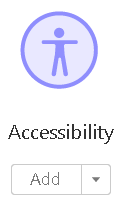
Figure 1. Accessibility Tools

Figure 2. Accessibility Full Check Command
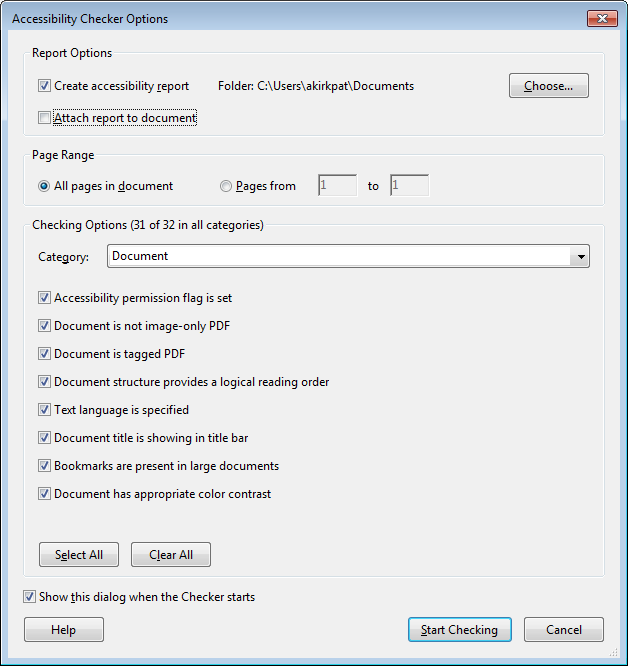
Figure 3. Accessibility Checker Option Dialog
After the check is complete, the results are displayed via the Accessibility Checker panel. (See “Figure 4. Accessibility Checker Panel”).
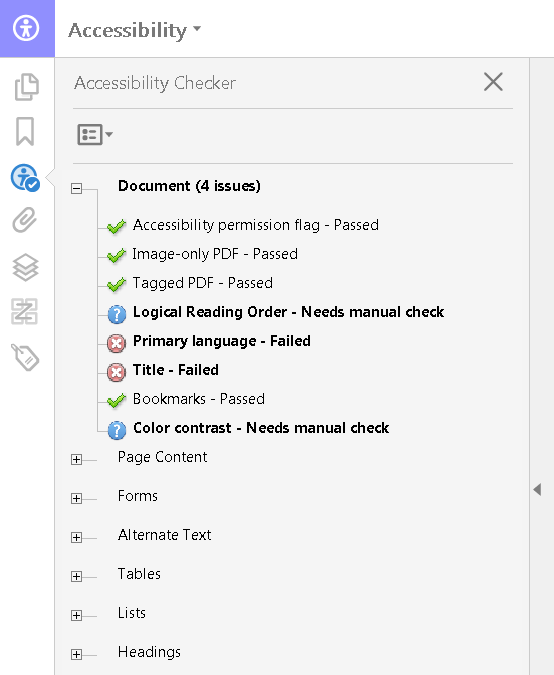
Figure 4. Accessibility Checker Panel
If a report was checked to be created in the Accessibility Checker Options dialog, the results are available in a previously selected folder or an attachment (See “Figure 5. Accessibility Report”).The Accessibility Report can also be displayed by activating the Accessibility Report tool command in the Accessibility tools pane.
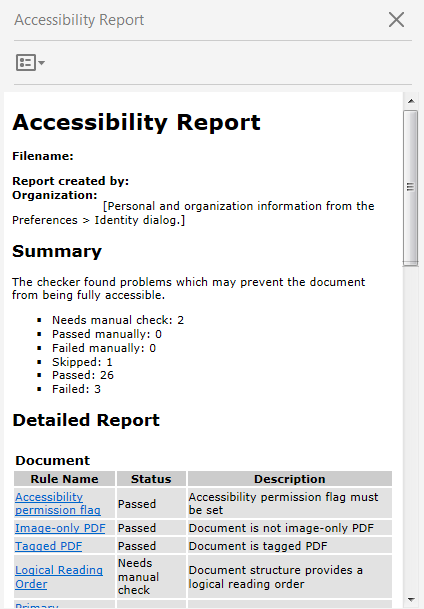
Figure 5. Accessibility Report
The Accessibility Full Check feature is unable to distinguish the intention of the document author such as whether a figure is purely decorative, so some issues it reports may not affect the functional accessibility of the document. Manual review of the issues may be required to determine whether to fix or ignore the issue.
Accessibility Checker Options
The Accessibility Checker (Full Check) has the following options that can be selected under each of the categories listed:
- Document
- Accessibility permission flag is set
- Document is not image-only PDF
- Document is tagged PDF
- Document structure provides a logical reading order
- Text language is specified
- Document title is showing in title bar
- Bookmarks are present in large documents
- Document has appropriate color contrast
- Page Content
- All page content is tagged
- All annotations are tagged
- Tab order is consistent with structure order
- Reliable character encoding is provided
- All multimedia objects are tagged
- Page will not cause screen to flicker
- No inaccessible scripts
- Navigation links are not repetitive
- Page does not require timed responses
- Forms, Tables and Lists
- All form fields are tagged
- All form fields have description
- TR must be a child of Table, THead, TBody, or TFoot
- TH and TD must be children of TR
- Tables must have headers
- Tables must contain the same number of columns in each row and rows in each column
- Tables must have a summary
- LI must be a child of L
- Lbl and LBody must be children of LI
- Alternate Text and Headings
- Figures require alternate text
- Alternate text that will never be read
- Alternate text must be associated with some content
- Alternate text should not hide annotation
- Elements require alternate text
- Appropriate heading nesting
Accessibility Checker Panel
Once a report has been run, the issues that have been found are displayed in the Accessibility Checker panel. The results tree displays one of the following states for each rule check (See “Figure 6. Accessibility Rule Check State”).
- Passed: The item passed this accessible check.
- Passed Manually: The item was marked passed by manual inspect.
- Skipped By User: The rule was not selected in the Accessibility Checker Options dialog box.
- Needs Manual Check: The Full Check feature could not check the item automatically. Verify the item manually.
- Failed: The item did not pass the accessibility check.
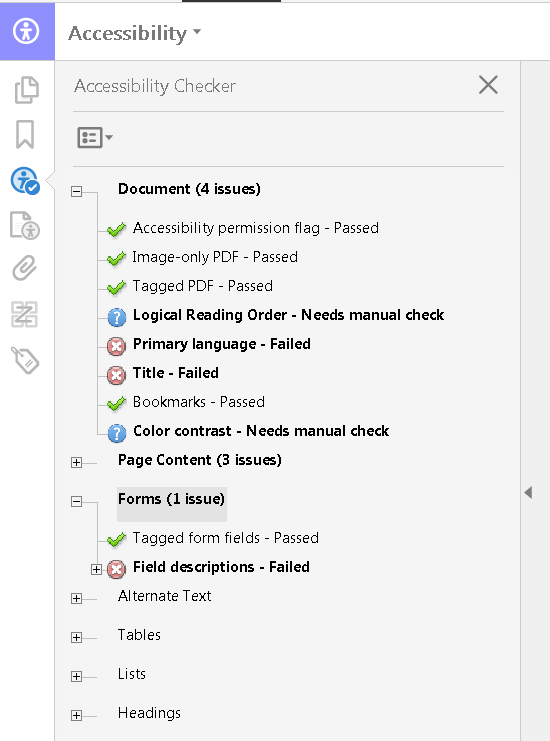
Figure 6. Accessibility Rule Check State
To fix a failed check after running Accessibility Full Check, activate the context menu—right-click (Windows) or Control-click (Mac OS) the item in the Accessibility Checker panel. Choose one of the following options from the context menu (See “Figure 7. Accessibility Checker Right Click Menu Options”).
- Fix: Acrobat either fixes the item automatically, or displays a dialog box prompting the user to fix the item by entering information or making a choice. For example, a dialog is displayed allowing the user to enter alternative text for an image.
- Skip Rule: Deselects this option in the Accessibility Checker Options dialog box for future checks of this document, and changes the item status to Skipped.
- Explain: Opens the online Help.
- Check Again: Runs the checker again on all items. Choose this option after modifying one or more items.
- Show Report: Displays the accessibility report for the page range/document with links to tips on how to repair failed checks. The link to tips is the same as the help that is provided by the “explain” item. Once the report is shown, a new option to attach the report also appears.
- Options: Opens the Accessibility Checker Options dialog box where checking options can be set.
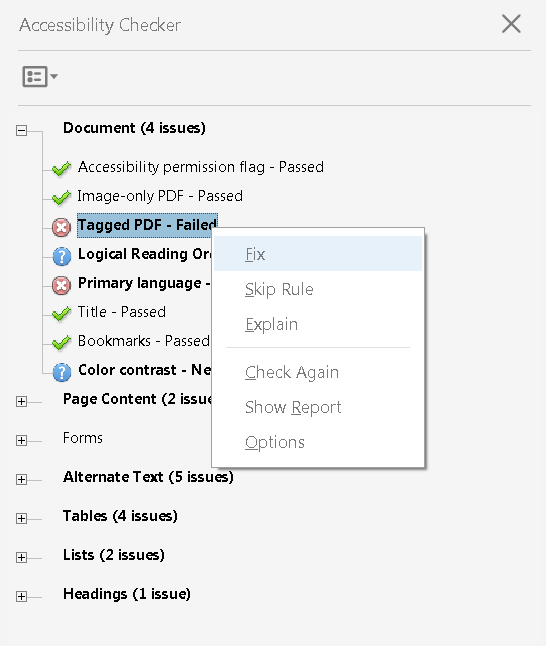
Figure 7. Accessibility Checker Right Click Menu Options
Accessibility Checker Option Details
Documentation Category
Accessibility permission flag: A document author can specify that no part of an accessible PDF is to be copied, printed, extracted, commented on, or edited. This setting can interfere with the user of a screen reader’s ability to read the documents screen readers must be able to copy or extract the document’s text to convert it to speech.
This flag reports whether it’s necessary to turn on the security settings that allow accessibility.
To fix the rule automatically, select Accessibility Permission Flag on the Accessibility Checker panel. Then, choose Fix from the Options menu.
Note: See related WCAG section: 1.1.1 Non-text Content. (A), 4.1.2 Name, role, value
Image-only PDF: Reports whether the document contains non-text content that is not accessible. If the document appears to contain text, but doesn’t contain fonts, it could be an image-only PDF file.
To fix this item automatically, select Image-only PDF on the Accessibility Checker panel, and choose Fix from the Options menu. This will open the “Recognize Text - General Settings” dialog and then perform optical character recognition (OCR) on the document.
Note: See related WCAG section: 1.1.1. Non-text content (A)
Tagged PDF: If this rule check fails, the document is not tagged to specify the correct reading order for reflow and assistive technology. Documents without tags also do not provide information describing the logical structure and relationship of elements to users of assistive technology.
To fix this item automatically, select Tagged PDF on the Accessibility Checker panel, and then choose Fix from the Options menu. Acrobat automatically adds tags to the PDF. The tags that were added still must be reviewed to ensure they are correct.
Note: See related WCAG section: 1.3.1 Info and Relationships, 1.3.2 Meaningful Sequence, 2.4.1 Bypass Blocks, 2.4.4 Link Purpose, 2.4.5 Multiple Ways, 2.4.6 Headings and labels, 3.1.2 Language of Parts, 4.1.2 Name, role, value
Note: See related WCAG section: Language of Page (Level A)
Title: Reports whether there is a document title. Document authors can choose to have the title appear in the Acrobat or Acrobat Reader application title bar rather than the document file name.
Note: See related WCAG section: 2.4 Page Titled (Level A)
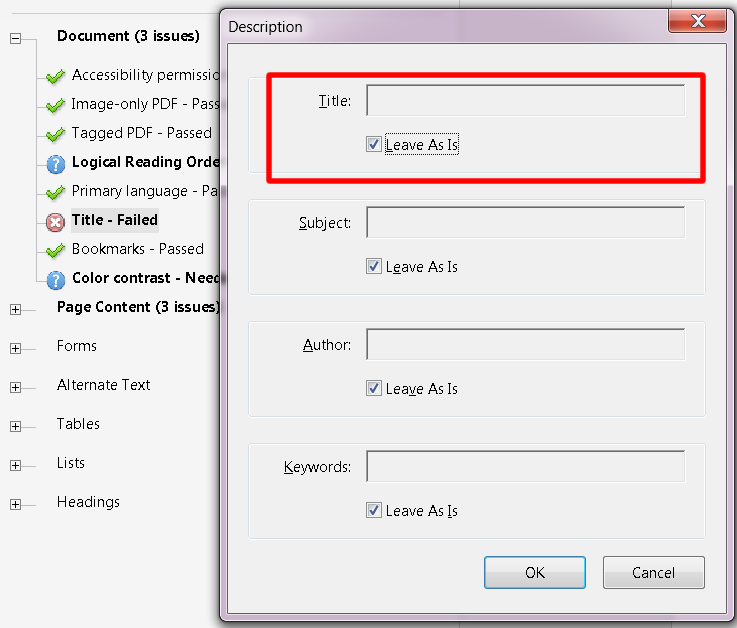
Figure 8. Fix a Missing Title in Acrobat
Bookmarks: This check fails when the document has 21 or more pages, but does not have bookmarks that parallel the document structure.
To add bookmarks to the document, select Bookmarks on the Accessibility Checker panel, and choose Fix from the Options menu. In the Structure Elements dialog box, select the element(s) that you want to use as bookmarks, and click OK.
Note: See related WCAG sections: 2.4.1 Bypass Blocks (Level A), 2.4.5 Multiple Ways (Level AA)
Color contrast: When this check fails, it’s possible that the document contains content that is not accessible to people who have low vision or color deficiencies.
To fix this issue, make sure that the document’s content adheres to the guidelines outlined in WCAG section 1.4.3 or include a recommendation that the PDF viewer use high-contrast colors and verify that all content is readable in the high-contrast color scheme.
To check the document in a high contrast color scheme perform the following:
Choose Edit > Preferences (Windows) or Acrobat > Preferences (Mac OS).
Choose the Accessibility category.
Select Replace Document Colors, and then select Use High-Contrast Colors. Choose the color combination that you want from the pop-up menu, and then click OK (See “Figure 9. Adjust Viewer to Display Document with High Contrast Settings”).

Figure 9. Adjust Viewer to Display Document with High Contrast Settings
Note: Selecting “Only change the color of the black text or line art” and “Change the color of line art as well as text” will adjust the text color and leave the additional backgrounds as they are, unless the new text color would result in too-low contrast, and in that situation it will adjust the additional background
Page Content
Tagged content: This check reports whether all content in the document is tagged. Make sure that all content in the document is either included in the Tags tree, or if decorative marked as an artifact.
Perform one of the following to fix this check:
- If the content is purely decorative, set it as an artifact.
- Use the Touch Up Reading Order tool to tag the content.
- Use the Tag panel to tag the content.
Note: See related WCAG sections: 1.1.1 Non-text content (A), 1.3.1 Info and Relationships (Level A), 1.3.2 Meaningful Sequence (Level A), 4.1.2 Name, role, value
Tagged annotations: This option checks whether all annotations are tagged. Make sure that annotations such as comments and editorial marks (such as insert and highlight) are either included in the Tags tree if meaningful, or marked as artifacts if they’re purely decorative or duplicated in the content.
- If the content is purely decorative, set it as an artifact.
- Use the Tag Panel and the Find command to search for and tag the content as an annotation.
Note: See related WCAG section: 1.3.1 Info and Relationships (Level A), 4.1.2 Name, role, value
Tab order: Because the Tab key is often used to navigate links, annotations, and form fields in a PDF, it’s necessary that the tab order parallels the document structure.
To fix the tab order automatically, select Tab Order on the Accessibility Checker panel, and choose Fix from the Options menu. This will specify the tab order to follow the document structure.
Note: See related WCAG section: 2.4.3, Focus Order (Level A)
Character encoding: Specifying the encoding helps PDF viewers present users with readable text. However, some character-encoding issues are not repairable within Acrobat.
To ensure proper encoding, do the following:
- Verify that the necessary fonts are installed on your system.
- Use a different font (preferably OpenType) in the original document, and then re-create the PDF.
- Re-create the PDF file with a newer version of Acrobat Distiller.
- Use the latest Adobe PostScript driver to create the PostScript file, and then re-create the PDF.
Note: The WCAG does not directly address Unicode character mapping.
Tagged multimedia: This rule checks whether all multimedia objects are tagged. Make sure that content is either included in the Tags tree or, if decorative or duplicative, marked as an artifact.
Perform one of the following to fix this check:
- If the content is purely decorative, set it as an artifact.
- Use the Touch Up Reading Order tool to tag the content.
- Use the Tag panel to tag the content.
Note: See related WCAG sections: 1.1.1 Non-text Content. (A), 1.2.1 Audio- only and Video- only (Prerecorded). (A), 1.2.2 Captions (Prerecorded). (A), 1.2.3 Audio Description or Media Alternative (Prerecorded). (A), 1.2.5 Audio Description (Prerecorded). (AA)
Screen flicker: Elements that make the screen flicker, such as animations and scripts can cause seizures in individuals who have photosensitive epilepsy. These elements can also cause difficulty for users with low vision and people with cognitive disabilities.
If the Screen Flicker rule fails, manually remove or modify the script or content that causes screen flicker.
Note: See related WCAG section: 2.3.1 Three Flashes or Below Threshold. (Level A)
Scripts: Content cannot be script-dependent unless both content and functionality are accessible with the keyboard and to assistive technologies. Make sure that scripting does not interfere with keyboard navigation or prevent the use of any input device.
Check the scripts manually. Remove or modify any script or content that compromises accessibility.
Note: See related WCAG sections: 1.1.1 Non-text Content. (A), 2.1.1 Keyboard (Level A), 2.2.2 Pause, Stop, Hide. (Level A), 4.1.2 Name, role, value
Timed responses: This check applies to documents that contain forms with JavaScript. If the rule check fails, make sure that the page does not require timed responses. Edit or remove scripts that impose timely user responses so that users have enough time to read and use the content.
Note: See related WCAG section: 2.2.1 Timing Adjustable. (Level A)
Navigation links: For URLs to be accessible to screen readers, they must be active links that are correctly tagged in the PDF document and keyboard accessible. (The best way to create accessible links is with the Create Link command, which adds link objects that screen readers require to recognize a link.) Use the Tags panel’s Find command to properly tag Links that are not accessible.
Link text must also be understandable on its own without surrounding content. If this rule check fails, check navigation links manually and verify that the content does not have links with an identical name but different target locations. Either change the link text or add actual text to the link tag to provide additional description out of context for users of screen readers.
Documents must also provide a way for users to skip over items that appear multiple times. For example, if the same links appear on each page of the document, also include a bookmark element to skip past the repetitive link group to the next tagged element in the structure . Links can not be used to skip past repetitive links as links can not focus tags in the tree and only scroll or zoom to a particular page view.
Note: See related WCAG section: 2.4.1 Bypass Blocks (Level A), 2.1.1 Keyboard (Level A), 2.4.4 Link Purpose (In Context) (Level A).
Forms
Tagged form fields: All form fields must be tagged with a form tag and form object element and part of the document structure. In addition, field descriptions (labels) must be provided via the tooltip form field property to provide the user with a label or instructions for a field.
To tag form fields, choose Tools > Accessibility > Add Tags To Form Fields. This add the tags and form object elements to the form fields in the proper location in the Tags panel. This step does not add field descriptions.
Note: See related WCAG sections: 1.3.1 Info and Relationships. (Level A), 4.1.2 Name, role, value
Note: See related WCAG sections: 1.3.1 Info and Relationships. (Level A), 3.3.2 Labels or Instructions (Level A), 4.1.2 Name, role, value
Alternate Text
Figures alternate text: Make sure that images in the document either have alternate text or, if decorative, are marked as artifacts.
If this check fails, perform one of the following:
- Select Figures Alternate Text in the Accessibility Checker panel, and choose Fix from the Options menu (or context menu). Add alternate text as prompted in the Set Alternate Text dialog box (See “Figure 10. Set Alternate Text through the Fix option in the Accessibility Checker”).
- Use the Tags panel to add alternate text for images in the PDF.
- Use the Tags panel, Content Panel, or Touch Up Reading Order tool to make the content an artifact.
Note: See related WCAG section: 1.1.1 Non-text Content. (Level A)

Figure 10. Set Alternate Text through the Fix option in the Accessibility Checker
Note: See related WCAG section: 1.1.1 Non-text Content (Level A).
Associated with content: Make sure that alternate text is always an alternate representation for content on the page. If an element has alternate text, but does not contain any page content, there is no way to determine which page it is on. If the Screen Reader Option in the Reading preferences is not set to read the entire document, then screen readers never read the alternate text.
To fix this issue, assign page content to the tag that contains the alternative/actual text.
Note: See related WCAG section: 1.1.1 Non-text Content. (Level A)
Note: See related WCAG sections: 1.3.1 Info and Relationships. (Level A), 4.1.2 Name, role, value
Other elements alternate text: This option checks for content other than figures that requires alternate text such as multimedia, annotation, or 3D models. Make sure that alternate text is always an alternate representation for content on the page. If an element has alternate text but does not contain any page content, there is no way to determine which page it is on. If the Screen Reader Options in the Reading preferences is not set to read the entire document, then screen readers won’t read the alternate text. If additional description is required for the object beyond what can be provided in alternative text, provide a on-page description or link to a description of the non-text object.
Note: See related WCAG section: 1.1.1 Non-text Content. (Level A)
Tables
Because table structure can be complex, it is best practice to check them for accessibility manually.
Rows: This check indicates whether each TR in a table is a child of Table, THead, TBody, or TFoot.
To fix this issue ensure that any TR tags are a child of a Table, THead, TBody, or TFoot tag.
Note: See related WCAG section: 1.3.1 Info and Relationships. (Level A)
TH and TD: This check indicates whether a proper table structure exists. TH and TD must be children of a TR element; if not this check fails.
To fix this issue, ensure that TH or TD tags are place under a TR tag.
Note: See related WCAG section: 1.3.1 Info and Relationships (Level A)
Headers: For accessibility, it’s necessary that all tables in the PDF have a header.
To fix this issue, ensure that all tables contain table header cells.
Note: See related WCAG section: 1.3.1 Info and Relationships (Level A)
Regularity: To be accessible, tables must contain the same number of columns in each row, and rows in each column.
To fix this issue, ensure that each table row has the same number of columns or the ColSpan and RowSpan properties of a cell are set properly to account for all cells in a row.
Note: See related WCAG section: 1.3.1 Info and Relationships (Level A)
Summary: Table summaries are optional unless the table data cannot be understood without it. Summaries can improve accessibility in complex data tables or when the way in which the data is read may be important.
To fix this issue, provide a table summary for data tables where it is needed to make the data easier to understand, or to provide instructions on the data should be reviewed.
Note: See related WCAG section: 1.3.1 Info and Relationships. (Level A)
Lists
List items: This check reports whether each LI is a child of L tag. When this check fails, the structure of this list is incorrect. Lists must have the following structure: a List element must contain List Item elements; List Item elements can only contain Label elements and List Item Body elements.
To fix this issue, ensure that all list item elements have a parent L tag.
Note: See related WCAG section: 1.3.1 Info and Relationships. (Level A)
Lbl and LBody: Lists must have the following structure: a List element must contain List Item elements; List Item elements can only contain Label elements and List Item Body elements. When this check fails, the structure of this list is incorrect.
To fix the list structure, use the Tags panel to place Lbl and LBody elements under each list item. The list bullet or number should be a text node of the Lbl tag and the list item text a text node of the LBody tag.
Note: See related WCAG section: 2.4.3, Focus Order (Level A)
Headings
Appropriate nesting: This rule checks nested headings. When this check fails, headings are not nested properly. For example, a level 1 heading should precede a level 2 heading, etc. The Accessibility Checker is not able to determine when heading structures must be used—that must be determined by manually reviewing the document.
To fix this issue, ensure that all heading levels are nested accordingly with no missing heading levels. Use the Tags Panel or Touch Up Reading Order tool to assign heading tags.
Note: See related WCAG section: 1.3.1 Information and Relationships. (Level A). The order of headings is not required under WCAG, and is only an advisory technique.
Continue Checking Until All Issues are Addressed
Repeat the process of running the Accessibility Checker and associated repair techniques along with the Hints for Repair until the Accessibility Checker indicates “Passed” for all selected tests (See “Figure 11. Successful Accessibility Check”).
Note: While the Accessibility Checker helps evaluate the accessibility of a document and helps identify areas that may be in conflict with Adobe’s interpretations of the referenced guidelines, the Accessibility Checker can not automatically check all accessibility guidelines and criteria, including those in such referenced guidelines, and Adobe does not warrant that any documents will comply with any specific guidelines or regulations. Please consult with appropriate legal counsel for guidance on compliance with the referenced guidelines or any other accessibility guidelines.
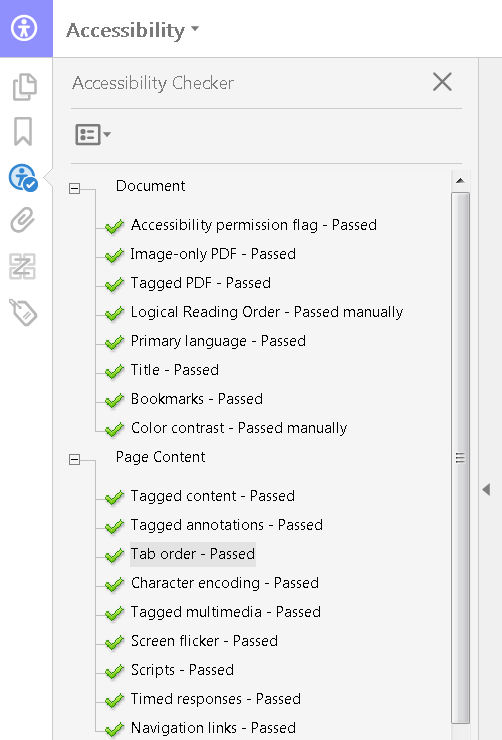
Figure 11. Successful Accessibility Check
Determine how easily persons with disabilities can access PDF documents with the Adobe Acrobat Pro Accessibility Checker
The accessibility checking tools in Adobe Acrobat Pro — Accessibility Checker (Full Check) and the Make Accessible action wizard — can identify many issues in PDF documents that may be in conflict with Adobe’s interpretations of the accessibility guidelines referenced in the application and its documentation. These tools do not check documents for all accessibility criteria, including those in such referenced guidelines, and Adobe does not warrant that documents comply with any specific guidelines or regulations.
Please refer to the Adobe Acrobat Pro Accessibility Repair Workflow Guide for instructions on how to tag annotations.
To have Acrobat assign tags automatically to annotations as they’re created, choose Tag Annotations from the Options menu on the Tags panel. This is the easiest approach to tag annotations that have not already been created, as the annotation tags will appear in the correct location in the reading order of a properly tagged document.
Please refer to the Adobe Acrobat Pro Accessibility Repair Workflow Guide for instructions on how to tag content.
In addition to providing tags and description of all multimedia, captions (for people who are deaf or hard of hearing) or audio descriptions (for people who are blind or visually impaired)may need to be synchronized with the multimedia. Please refer to the relevant guideline or standard for multimedia requirements.
The Make Accessible Action Wizard walks users through the steps required to make a PDF accessible. It prompts to address accessibility issues, such as a missing document description such a document title. It looks for common elements that need further action, such as scanned text, form fields, tables, and images without alternative text. This Action Wizard can be run on all PDFs except dynamic forms (XFA documents) and portfolios. The last step of the Make Accessible Action Wizard is to run the Acrobat Pro Accessibility Checker (Full Check). For complete instructions on how to make documents accessible and repair the accessibility tag structure of a document refer to the Adobe Acrobat Pro Accessibility Repair Workflow.
This section provides information on each option in the Accessibility Checker. Please refer to the Adobe Acrobat Pro Accessibility Repair Workflow for details on how to address issues for each category.
Logical reading order: Verify this rule check manually. Make sure that the reading order displayed in the Tags panel reflects the logical reading order of the document.
Primary language: Setting the document language in a PDF enables some screen readers to switch to the appropriate language. This check determines whether the primary text language for the PDF is specified. If the check fails, set the language.
To set the language automatically, select Primary Language in the Accessibility Checker tab, and then choose Fix from the Options menu. Choose a language in the Set Reading Language dialog box, and then click OK. This does not set the language for specific parts of the document that may be in different languages. To set specific portions of the document in different languages refer to the Adobe Acrobat Pro Accessibility Repair Workflow.
Please refer to the Adobe Acrobat Pro Accessibility Repair Workflow Guide for instructions on how to tag content.
Field descriptions: All form fields must have a text label/description (this is set via the form field’s tooltip property).
To add a text description to a form field, use the form tools. Please refer to the Adobe Acrobat Pro Accessibility Form Guide for complete instructions on how to set form field descriptions. Accessibility guidelines and standards may also require that visual labels be present. The tooltip property is only visible via the mouse and not the keyboard, thus, on-screen labels should also be provided for all user input.
Nested alternate text/actual text: Screen readers do not read the alternate/actual text for nested elements. Therefore, do not apply alternate text to elements with children unless the alternative text or actual text covers the content for these elements as well. Alternative text is used to provide an alternative for images (figures). Actual text is used to provide an alternative to text content.
Remove alternate/actual text from nested elements via the Tags panel. For more information on using alternative text and actual text refer to the Adobe Acrobat Pro Accessibility Repair Workflow Guide.
Hides annotation: Alternate text can not hide an annotation. If an annotation is nested under a parent element with alternate/actual text, then a screen reader will not announce it.
Remove alternate/actual text from parent element. If alternate/actual text is needed make sibling objects out of content and the annotation and assign the actual/alternate text to the sibling tag. For more information on using alternate text and actual text, refer to the Adobe Acrobat Pro Accessibility Repair Workflow Guide.